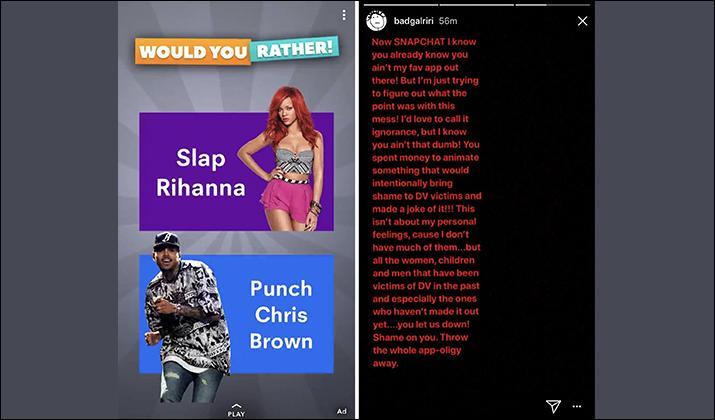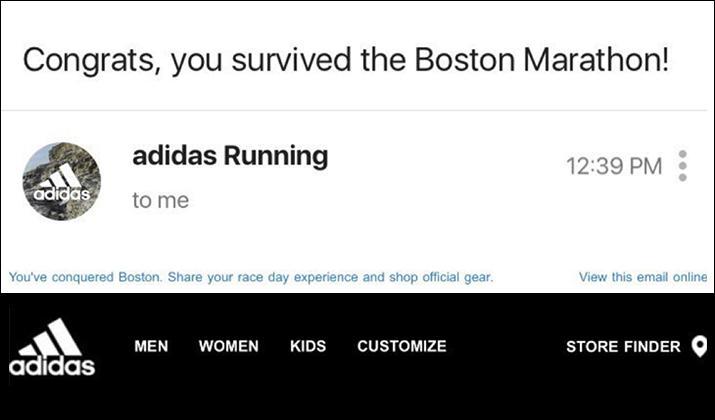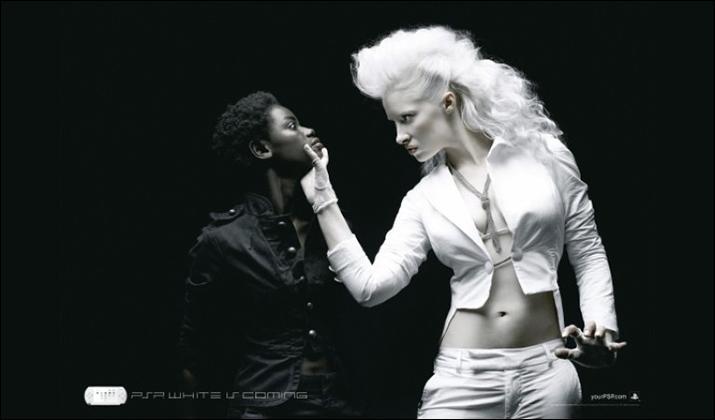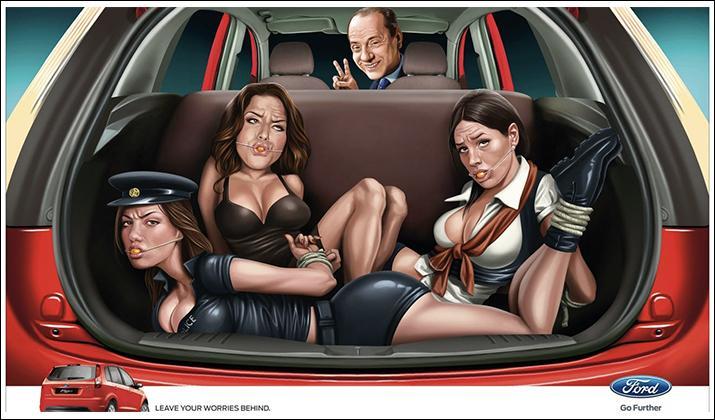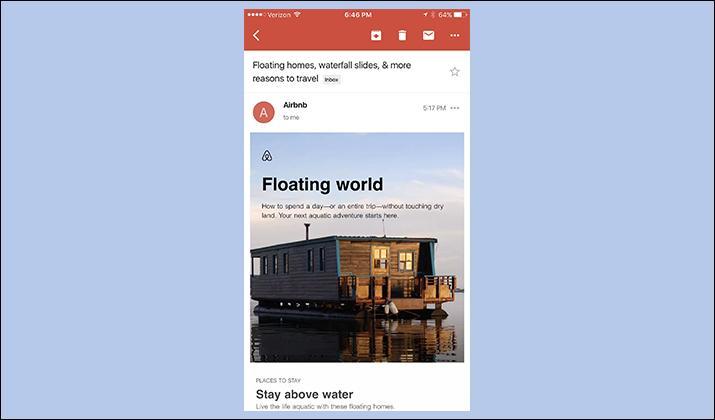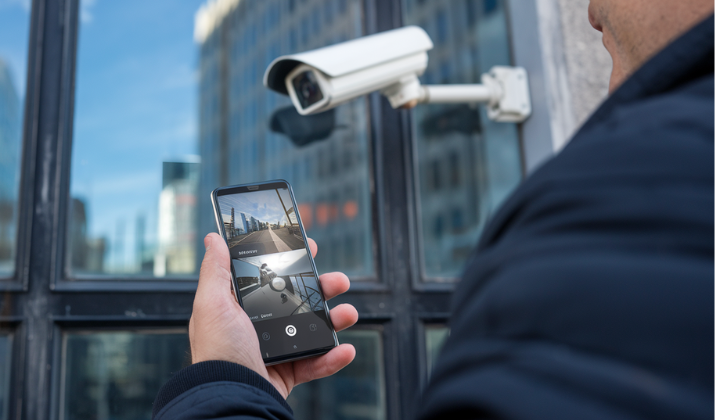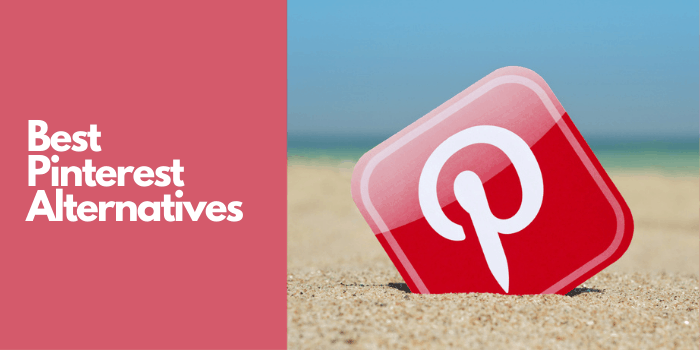You can’t always get it right with marketing. Sometimes things simply don’t work out, which can be damaging considering how colossal marketing budgets usually are.
Currently, most small businesses spend 8.11% of their entire revenue on marketing alone. This amount is higher for bigger companies. So it goes without saying that marketing takes a significant chunk of a company’s resources, and failing to make an impact can be catastrophic.
Over the years, the world has been treated to fantastic marketing campaigns whose impact lasted a lifetime, while others were so bad they barely registered. In this article, I’ll explore some standout companies with bad marketing examples.
Read on to the end to find out some companies with bad marketing examples that made the list; you may see someone familiar.
Also Read: Best Digital Marketing Quotes For Inspiration
-
Bad Marketing Examples and Fails
- 1. Pepsi Featuring Kendall Jenner
- 2. Dead Dad Ad by McDonald
- 3. Dove and the Body Positive Blunder
- 4. Dove Racist Ad
- 5. Heineken’s “Lighter Is Better” Ad
- 6. Snapchat’s “Would You Rather!” Fail
- 7. Bud Light “Removing No” Ad
- 8. Kurl-On and the Malala Ad
- 9. Nivea “White Is Purity” Deodorant Ad
- 10 KFC and the Oprah Promo
- 11. Adidas and the Boston Marathon Email
- 12. Sony “White Is Coming” PSP Poster
- 13. Ford and the Figo India Fiasco
- 14 Airbnb and the Floating World Email
- 15. Bootea Shake and Scott Disick
- Wrapping Up: Which One Stood Out for You?
Bad Marketing Examples and Fails
1. Pepsi Featuring Kendall Jenner
This was the worst case of “not reading the room,” so to speak, and a good example of a marketing failure that should never be repeated.
The timing of the ad and the choice of Kendall Jenner has gone down to be one of the worst marketing examples that should never be attempted by anyone again.
The 2017 ad was an attempt by Pepsi to promote a message of unity when there were increased anti-police protests around the killing of unarmed black men.
The ad showcased Kendall Jenner having a photoshoot only to notice people protesting nearby. She ditches her photoshoot and joins in without knowing what the activists are protesting about.
Kendall then picks up a can of Pepsi and hands one to the rioting police forming a line in front of the protesters, and the ad shows everyone happy, with the problem supposedly solved.
This ad was an epic fail because, to the people affected by police violence, it felt like Pepsi was trivializing their plight by using a privileged model to promote their drink while they were risking their lives to get their voices heard.
The fallout was swift and brutal, and Pepsi had to apologize and cancel the entire campaign. Using hot topics for ads is a very slippery slope.
Explore: Unethical Advertising Examples
2. Dead Dad Ad by McDonald
The 2017 ad starts with a young boy sifting through old memorabilia belonging to his late dad. The scene then cuts to the boy asking his mother how his dad was, which means he must have died before he was born or when he was too young to remember.
What follows is a series of glowing descriptions by the mother; all the while, the boy keeps comparing his skills with the description of his dad, frowning at each because he isn’t any good. Finally, the cringy ad ends with the boy biting into a McDonald’s burger, just like his father, which causes the mom to pause momentarily like she’s seeing him again.
The ad fails on so many fronts. First, it’s hard to tell what it is even about from the start. The one and half-minute of dialogue around death and even when the burger appears towards the end isn’t delivering a clear message.
Furthermore, burgers are happy meals, so choosing to go with a topic as morbid as death has to be one of the most shocking ad concepts yet. Exploiting grief to depict a meal associated with good times was bound to end badly, and that’s precisely what happened.
In the apology that McDonald’s had to issue, it claimed that the intention was to showcase the role of its burgers in the daily lives of its customers, even the difficult and sad moments. They learned a hard lesson that sadness has no place where food is.
Check Out: Bad Advertising Examples
3. Dove and the Body Positive Blunder
Unilever’s heart was probably in the right place when they created the body positivity ad in 2017, but they could have saved themselves from unnecessary backlash if they had an all-inclusive team making the ad.
In this example of a marketing fail, Dove created six bottles of shower gel, calling them Real Beauty Bottles, all coming in different shapes with the message that “every woman is their limited edition.”
This, unsurprisingly, was received with shock by its loyal customers, who immediately felt like the company was patronizing their body types. Women have always struggled with their bodies, feeling insecure due to the ever-changing standards and this ad reminded them of that.
So this kind of thing coming from one of the brands they have trusted for so long didn’t go down well.
The Real Beauty Bottles made most women feel attacked, and even picking up the bottle from the shelf became a task. Limiting the shapes to six only sent a negative message to women who felt they weren’t represented.
Dove apologized for that error.
Also Read: Examples of Ethos, Pathos, Logos In Advertising
4. Dove Racist Ad
While the body positivity ad may have been an honest mistake, what Unilever did with this 2017 ad was downright tone-deaf, and it’s hard to understand how this was discussed, executed, and given the green light.
The ad shows an African woman taking off her brown blouse with the message, “Ready for a Dove shower? Sulfate Free with 100% gentle cleansers; our body wash gets top marks from dermatologists”.
But what follows next is shocking. As the African woman removes her brown top, she immediately transitions into a white woman in a white top and then to a brown woman.
Fairplay to Unilever, when the video is played in a loop, it shows different skin types harmlessly transforming into each other.
But when a person of African descent sees that first transition into a white woman, their reaction is very predictable, considering how rampant racism is in marketing.
Unilever quickly apologized, claiming the ad was intended to showcase diversity. But this showed the importance of having different perspectives on your teams.
I’m unsure if Unilever had a black woman on the team when this ad was being made because they could have pointed this out immediately.
5. Heineken’s “Lighter Is Better” Ad
The fifth company on our list is Heineken with an ad campaign that didn’t foresee the possible racist undertones it conveyed.
The ad begins with a bartender spotting a thirsty reveler using a pair of binoculars. The reveler, a white lady, is eying a glass of wine, and the bartender takes out a cold bottle of Heineken beer and slides it towards her.
The beer passes several people, most of them black, until it reaches the lady, then a message pops up next to the beer saying, “Sometimes, Lighter is Better.”
The ad split people into two, those that didn’t see anything wrong with it and those that found fault with the racist undertones. This further reinforces why marketing campaigns must be as transparent as possible in order to avoid any confusion and multiple interpretations.
From a black person’s point of view, it’s understandable to see racism when the message “Lighter is Better” appears just after the beer goes past several black people.
Like in all the other examples we’ve mentioned, Heineken apologized for the light beer advert and pulled it down.
6. Snapchat’s “Would You Rather!” Fail
This was a colossal failure from the start because it was a combination of insensitivity and disrespect for survivors of gender-based violence.
To make itself more enjoyable, Snapchat started a fun game called “Would You Rather,” which would give people two action choices. Users would snap a selfie and then point to their choice with their finger.
All was good until a question that asked people to choose between slapping Rihanna or punching Chris Brown appeared. This was in very bad taste, considering what happened in 2009.
What followed was one of the most disastrous PR nightmares for any social media site. Rihanna took offense to the game and blasted Snapchat on social media, and despite several apologies, users took things personally.
According to the Telegraph, Rihanna’s public criticism of the Snapchat game led to the company losing about $1 billion, making it a costly mistake.
7. Bud Light “Removing No” Ad
Another beer brand failed to do due diligence before putting out an insensitive ad that appeared to promote rape culture.
In their April 2015 beer campaign, Bud Light added the words “The perfect beer for removing “NO” from your vocabulary for the night #UpForWhatever.”
This example of a marketing failure was considered very distasteful, considering the many cases where women have been taken advantage of sexually when inebriated or their drinks were spiked.
There was immediate backlash from the public, accusing Bud Light of promoting rape culture while taking away the victims’ consent power.
And still on Bud Light, the company is currently embroiled in another ad controversy after it collaborated with Dylan Mulvaney, a transgender TikTok star. Videos of anti-transgender protests with people crushing their Bud Light beer cans have been shared all over the internet.
Amazing how far a simple misstep in marketing, no matter the good intentions behind it, can cause.
8. Kurl-On and the Malala Ad
Kurl-On is one of India’s most prominent mattress manufacturers and retailers. You would expect a company of that size to be careful with creating an ad that doesn’t take advantage of a tragedy, but that’s precisely what Kurl-On did in 2014.
The company created an ad showing Malala being shot, followed by several iterations of her falling while recovering before landing on a Kurl-On mattress and winning an award.
The aim may have been to showcase how comfortable the mattresses are even for injured people, but using Malala, a girl who was shot when she was 15 for fighting for children’s rights, was in very bad taste.
The ad agency tasked with making this ad, Ogilvy & Mather, promptly apologized to Malala and her family after receiving a lot of backlash from the public and media houses in India and beyond.
Safe to say, using a tragedy as ad content will always backfire without fail.
9. Nivea “White Is Purity” Deodorant Ad
Another well-intentioned ad once again proves how sensitive the racism issue can be and how easily things can go wrong if you’re not careful enough.
Just like the Dove ad, Nivea features a montage that had the figure of a woman with long hair, probably Caucasian, wearing white clothes with the caption “White is Purity: Keep it Clean, Keep it Bright. Don’t Let Anything Ruin It”.
Although the ad was made for the Middle East audience, the racist connotations in the wording couldn’t go unaddressed by people, and the backlash that followed forced Nivea to apologize and pull down the ad.
However, the damage had already been done by that time since the ad had gone live for two days. Adding an image of a black man clutching a mannequin’s afro with the caption “Re-Civilize Yourself” didn’t help matters much, but that’s a mistake Nivea won’t be repeating anytime soon.
10 KFC and the Oprah Promo
In 2009, at the peak of the Oprah Winfrey Show, KFC thought it wise to create an ad featuring the Oprah Winfrey Show to promote a newly launched grilled chicken meal. KFC offered a free meal to all Oprah show viewers; all they had to do was download a coupon from the Oprah website.
KFC didn’t anticipate how popular the show was at the time because the plan backfired spectacularly.
It’s estimated that over 10 million people downloaded the coupons leading to long lines across the country in every KFC outlet across America. They had to cancel the free meal offer immediately, which could have effectively run the company into huge losses.
11. Adidas and the Boston Marathon Email
This was another case of a company not reading the room and making a bad mistake with good intentions.
As the main sponsor of the 121st edition of the Boston Marathon in 2017, Adidas sent an email to all the participants who finished the race with a simple “Congrats; you survived the Boston Marathon.”
A harmless message of congratulations wouldn’t raise any eyebrows for those living under a rock. The problem with the message was that this was the same marathon with a bomb attack in 2013 where three people lost their lives.
This made it look like Adidas was making fun of that event and relating it to the 2017 marathon, and that didn’t go down so well as a marketing ploy.
Adidas issued an apology almost immediately, but it’s tough to imagine how such a message was authorized in the first place.
12. Sony “White Is Coming” PSP Poster
Drumming up hype for new products is usually a huge event in the gaming world. So when promoting a new white-colored PSP in the Netherlands in 2006, Sony took “go big or go home” too seriously.
The blown-out printed poster showed a huge white woman wearing white clothes with a very aggressive expression holding the face of a scared black woman in black clothes. This was accompanied by the caption “PlayStation Portable White is Coming.”
The poster attracted backlash immediately as it looked like it was promoting some form of racism by showing how domineering white people are over black people.
Sony withdrew the ad with an apology mentioning that the ad intended to showcase the contrast between the two primary PSP colors.
13. Ford and the Figo India Fiasco
It’s hard to tell where the mind of this ad’s creator was, but no matter the angle you look at it, this was a very deliberate move by a person with a very sick sense of humor.
While promoting the launch of the Ford Figo in India in 2013, Ford contracted an ad agency called WPP, which then created a caricature poster showing three women tied and gagged in the trunk of the Figo. The tagline followed this, “Leave your worries behind with Figo’s extra-large boot.”
The aim? To showcase how spacious the trunk of the car was. But that wasn’t the craziest part; they added a caricature of the former Prime Minister of Italy, Berlusconi, in the driver’s seat, a man known for many sexist remarks in the past.
The backlash that followed forced Ford to apologize publicly through the Ford Marketing chief at the time, Jim Farley. All the people involved in creating and signing off had their roles at the ad agency terminated.
14 Airbnb and the Floating World Email
While Hurricane Harvey was creating havoc in Texas and rendering thousands of people homeless in 2017, Airbnb saw it wise to run an ad whose running theme was Floating Homes and follow it up with a mass email to its subscribers captioned “Stay above water, live the life aquatic with these floating homes.”
Airbnb somehow saw it fit to advertise its services just as people lost their homes to a devastating hurricane. This rubbed people the wrong way because the ad made it sound like people had spare money to rent an Airbnb for months.
The email caption was rather insulting as it felt like Airbnb was making fun of people by pushing floating homes at a time when homes were sinking under floods.
The apology came, but the damage was already done.
Also Read: Best Airbnb Alternatives
15. Bootea Shake and Scott Disick
Another Kardashian is making the list. This was a case of using an influencer who neither understood nor cared for the product.
Bootea Shake is another company with a bad marketing example that tried to spice things up by tapping the services of Scott Disick in 2016 to promote their new protein shake to his millions of Instagram followers.
The instructions were simple. Scott Disick had to pose with a Bootea Shake and post a caption alongside it to show how it was transforming his workout routine. But something terrible happened instead.
Scott Disick copied and pasted the instructions he was given, word for word, and shared them with his millions of followers. This is how the caption reads.
“Here you go, at 4 pm est, write the below. Caption: Keeping up with the summer workout routine with my morning @booteauk protein shake!”
The post was deleted right after, but the screenshots lived on to immortalize that unbelievable oversight.
Wrapping Up: Which One Stood Out for You?
It’s hard to wrap your head around how something so wrong can escape the attention of many marketing professionals and make its way to the public domain.
Jumping on the hottest trend can backfire on your brand.


